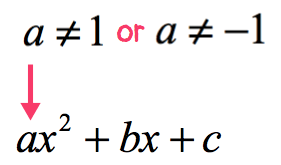

Question 1: Which of the following is a binomial?Ĭ)3a*4b* 2c will give 24abc, which is a monomial Standard Identities of Binomials and Trinomials.When an nth-degree of single-variable polynomial equals to 0, then the resultant polynomial equation of degree ‘n’ acquires the following form:Ī nx n + a n-1x n-1 + … + a 2x 2 + a 1x + a = 0īrowse more Topics under Algebraic Expressions And Identities Therefore, the above expression can be shortened to:Ī nx n + a n-1x n-1 + … + a 2x 2 + a 1x + a Since x 1 = x and x 0 = 1 considering all complex numbers x. In this, a’s denote the coefficients whereas x denotes the variable. Since the highest exponent is 1, the degree of 7x – 5 is also 1.Ī single-variable polynomial having degree n has the following equation:Ī nx n + a n-1x n-1 + … + a 2x 2 + a 1x 1 + a 0x 0

The exponent for the first term 7x is 1 and for the second term -5, it is 0. Now, let us define the exponent for each term. In the given example, the first term is 7x, whereas the second term is -5. It is simply the greatest of the exponents or powers over the various terms present in the algebraic expression. For example: 0x 2 + 0x – 0 Degree of a Polynomial In this type, the value of every coefficient is zero. There is another type of polynomial called the zero polynomial. Likewise, 12pq + 4x 2 – 10 is a trinomial. It is due to the presence of three, unlike terms, namely, 3x, 5x 2 and 6x 3. For example- 3x + 5x 2 – 6x 3 is a trinomial. Trinomials – Trinomials are the algebraic expressions with three unlike terms, hence the name “Tri”nomial.

For example, 3x + 4x 2 is binomial since it contains two unlike terms, that is, 3x and 4x 2.


 0 kommentar(er)
0 kommentar(er)
